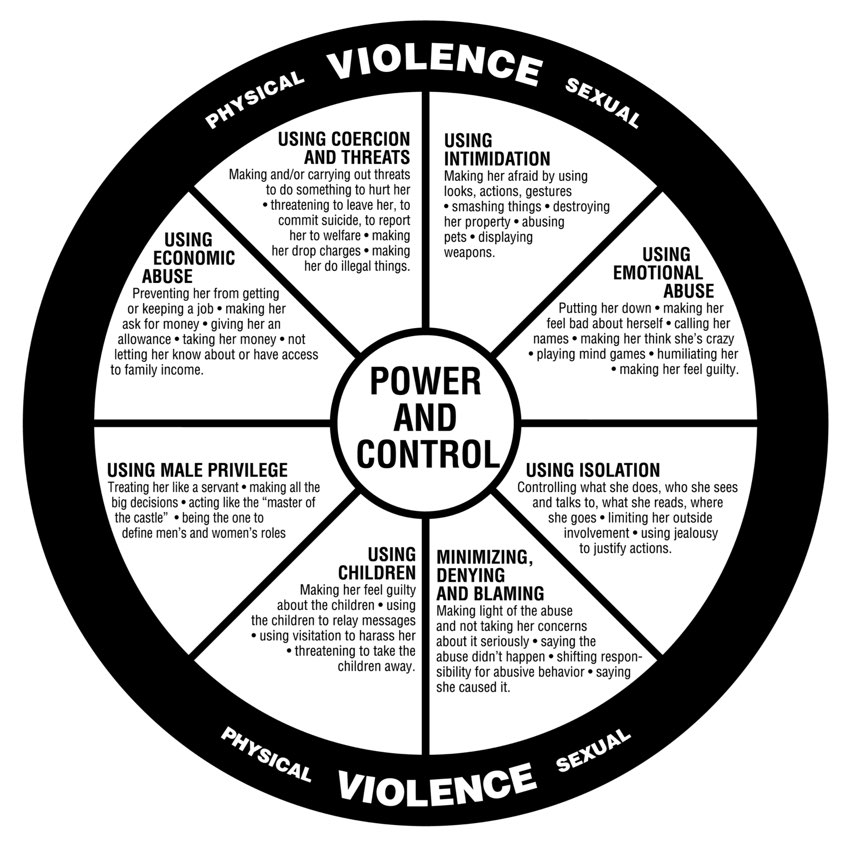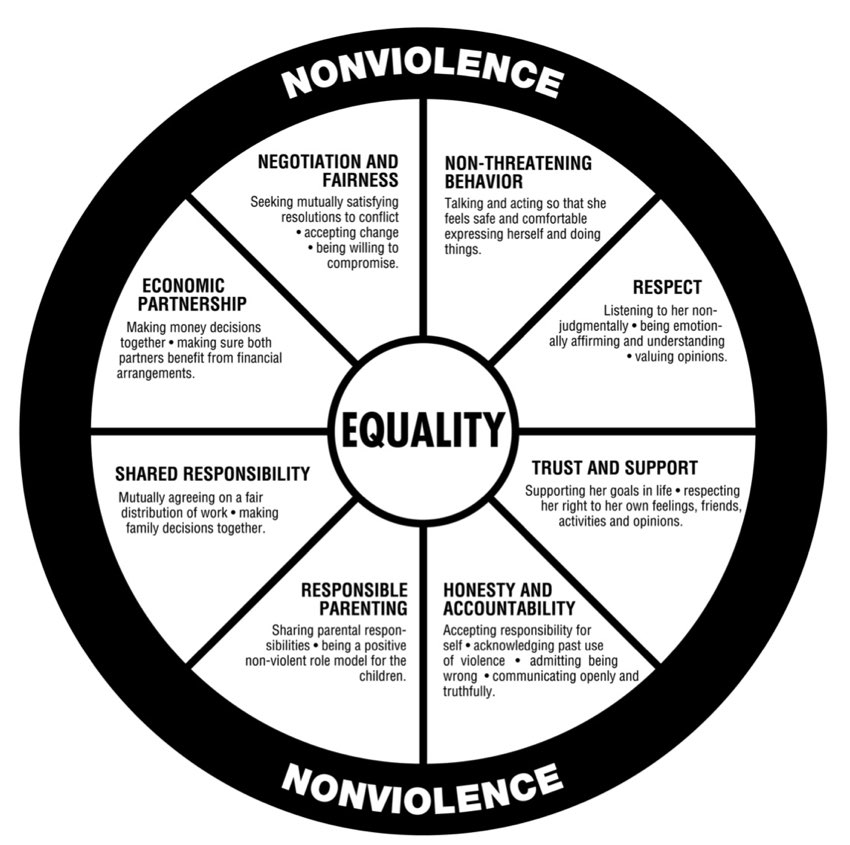WARNING:
Your abuser may monitor your internet use and may be able to view your computer activity. If you have reason to believe that your computer is not secure, you may wish to use a computer in another location to which your abuser does not have access.
Overview of Intimate Partner Violence
Intimate partner violence is more than just physical assault and is defined as a pattern of behaviors batterers use against current or former intimate partners to establish power and control. It can include physical, sexual, emotional, spiritual, or economic abuse, as well as the use of threats, isolation and pet abuse, threats related to children, and a variety of other behaviors to maintain power over one’s partner through violence, fear, and intimidation. Intimate partner violence affects millions of individuals across the United States regardless of age, economic status, race, religion, or education. Intimate partner violence impacts approximately one in four women in the United States annually.
Coercive Control
The term "coercive control" provides holistic representation of the various tactics a batterer uses beyond viewing it as a "fight" between partners. Coercive control is the means by which a batterer systemically eradicates the survivor's liberty and freedom to strip away her sense of self. Coercive control tactics amplify violence by creating fear, withholding resources, and violating the survivor's rights and liberties. Evan Stark, an author and expert in the field of domestic violence, defines coercive control as "a malevolent course of conduct that subordinates women to an alien will by violating their physical integrity (domestic violence), denying them respect and autonomy (intimidation), depriving them of social connectedness (isolation), and appropriating or denying them access to the resources required for personhood and citizenship (control)."
Power and Control Wheel

Equality Wheel




